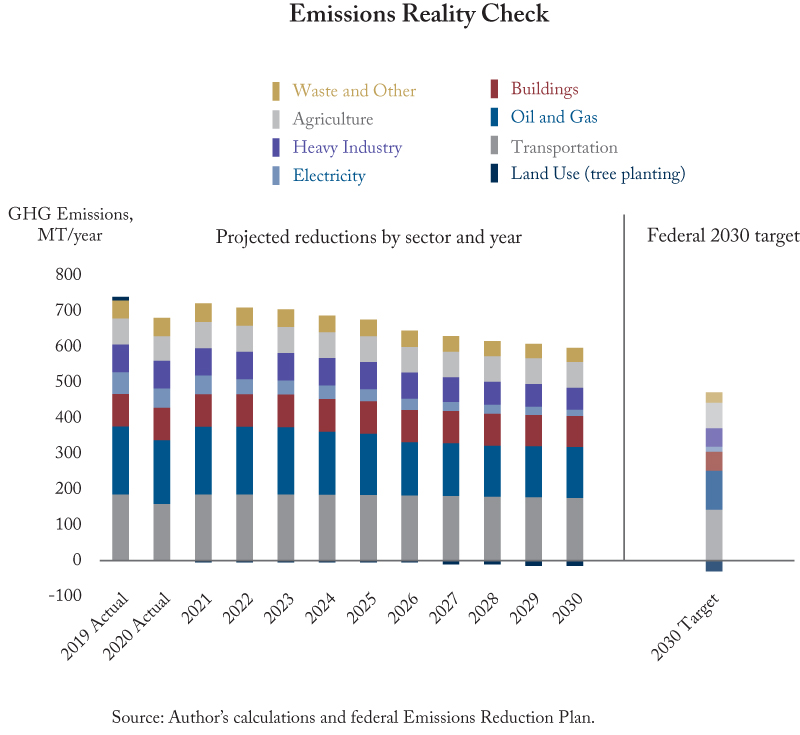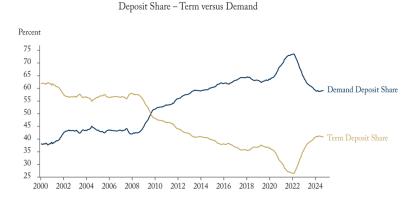Last March, Ottawa announced its target for greenhouse gas emissions in 2030. It wants them reduced 40 percent by 2030, from 740 million tonnes (MT) of CO2-equivalent in 2019 to 442 MT.
Setting targets is a lot easier than hitting them. Ottawa’s Emissions Reduction Plan is long on policies and programs but short on what needs to actually happen.
A series of analyses available on the C.D. Howe Institute website, including details on all the assumptions behind the calculation, suggests the 2030 reduction will be, at best, only 158 MT – only a little over halfway to Ottawa’s target.
Assessing how Canadians and businesses are likely to actually behave requires a bottom-up understanding of the economics and engineering in diverse parts of the economy, such as transportation, oil and gas, buildings, and other industries, such as agriculture and waste.
For example, looking company-by-company, the capacity and intention to assemble and sell electric vehicles will fall far short of the federal mandate to force internal combustion vehicles out of the national fleet. Similarly, Ottawa is pinning its hopes on the installation of about 500,000-600,000 heat pumps per year between now and 2030 in residential, commercial and industrial buildings when the recent annual installation bobs around 20,000. A new $5,000 homeowner grant for heat pump retrofits is the carrot, along with investment tax credits to encourage heat pumps for commercial and industrial buildings. However, there is no explanation or strategy addressing the actual task of heat pump installation.
Adding it all up, these realistically revised numbers yield a reduction forecast of only 158 metric tonnes, some 47 percent short of Ottawa’s 298 MT target.





